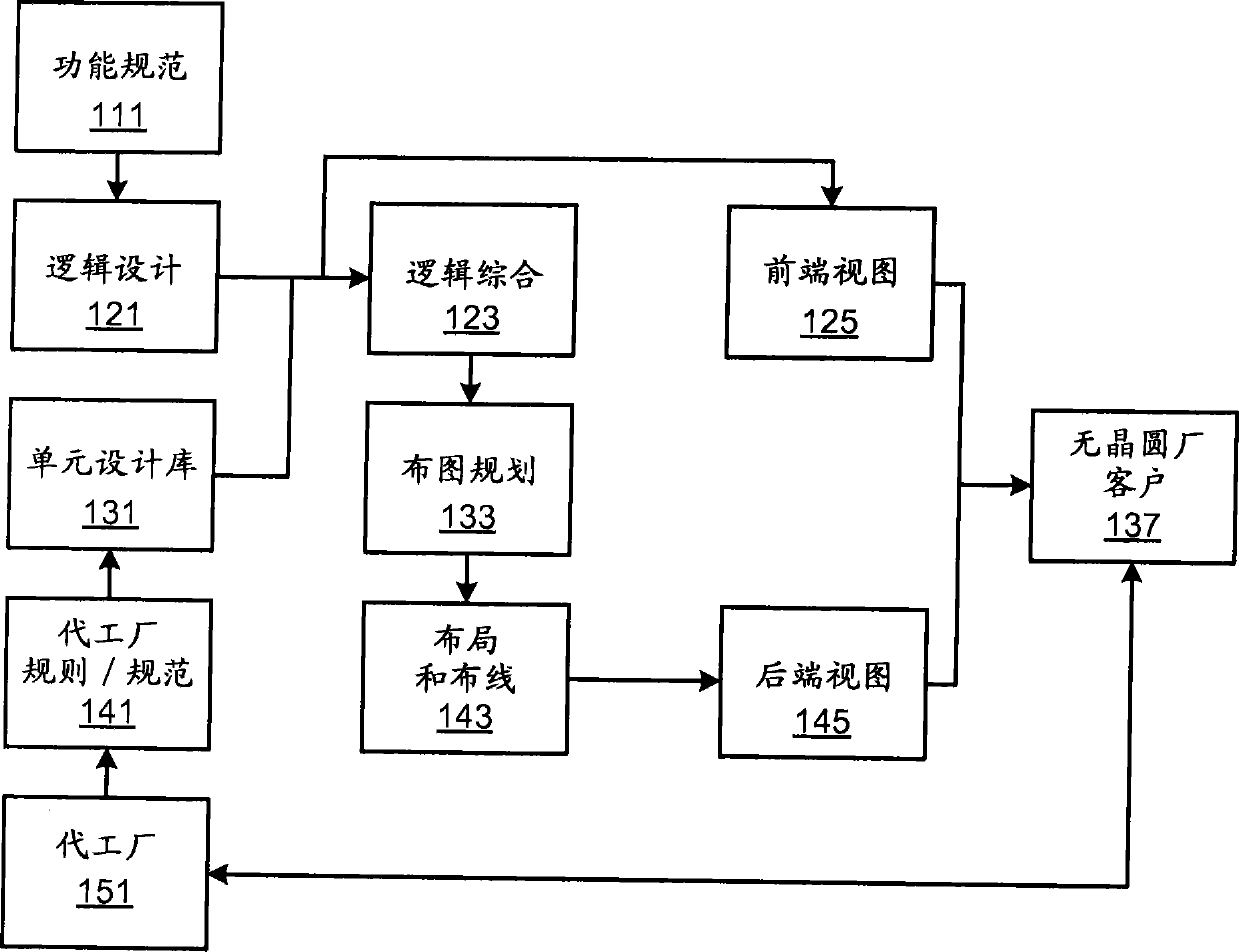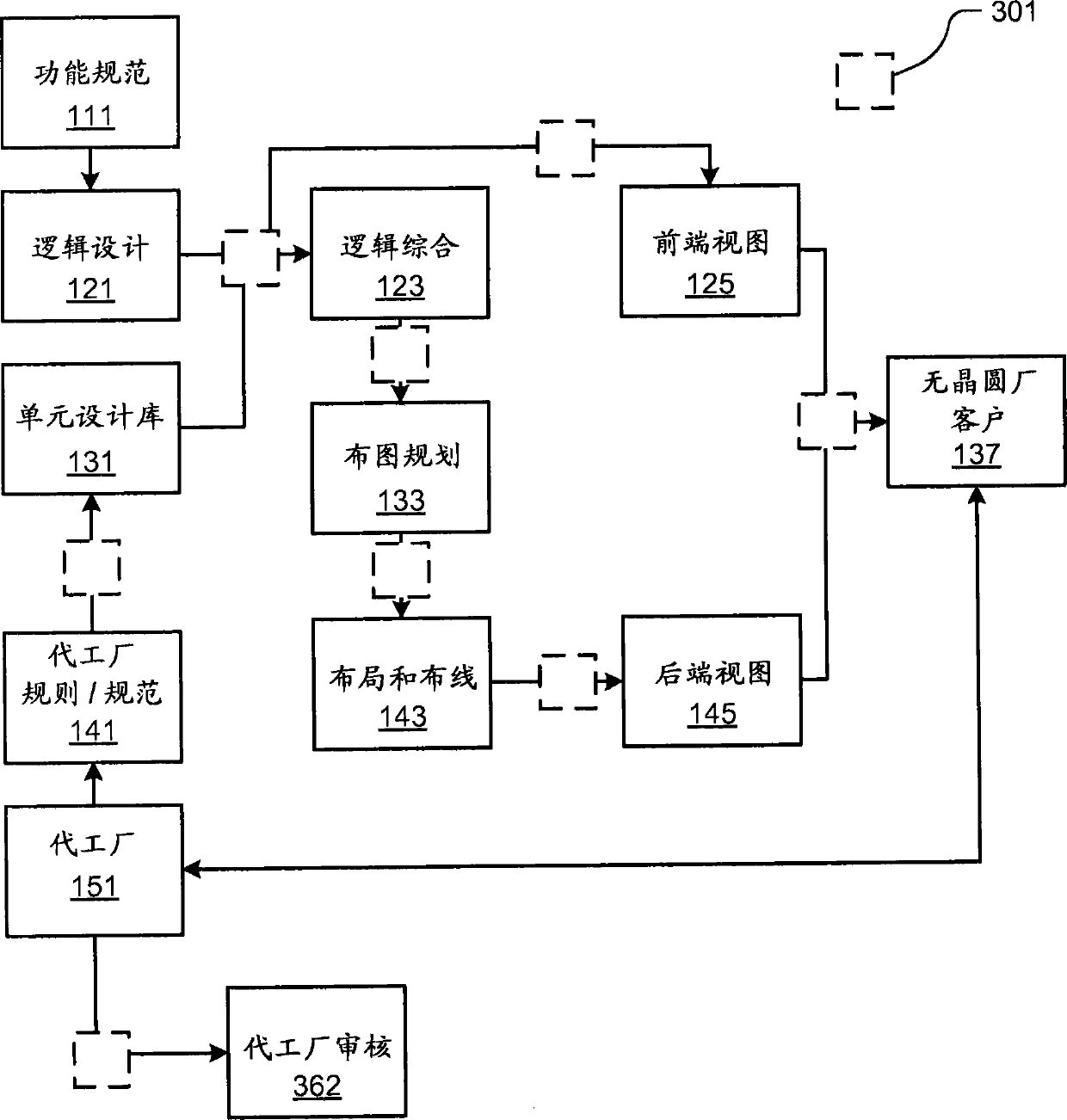Methods and devices for independent evaluation of cell integrity, changes and origin in chip design for production workflow
A technology of design data and design files, applied in computer-aided design, CAD circuit design, calculation, etc., can solve problems such as insufficient robustness or efficiency
- Summary
- Abstract
- Description
- Claims
- Application Information
AI Technical Summary
Problems solved by technology
Method used
Image
Examples
example 1
[0314] Example 1: Liberty formatted file
[0315] The Liberty library file format provides a way to describe the functionality and timing of a circuit to logic synthesis tools. It is defined by Synopsys and is widely used since Synopsys has published the specification. It is a text-based format that can be easily viewed, but due to the amount of data in a Liberty file, it is usually created by software.
[0316]In this first example, the generalization of Liberty design language files will be discussed. Some parts of the Liberty documentation are undocumented. "Undocumented" refers to normalized generalizations. In general, unit names are not generalized because doing so would prevent the matching of otherwise equivalent units with different names. Some parsers also skip required tokens and do not provide additional information such as fixed-position keywords or layer names (since digests are separated by layers anyway).
[0317] In some formats, the "text" that is reco...
example 2
[0436] Example 2: Verilog file type
[0437] Verilog is a simulation and register transfer logic (RTL) language widely used in integrated circuit design. It is a text-based format typically created by a designer and compiled by a logic synthesis tool. It allows designers to specify designs as interconnected blocks. Circuit functions are specified in blocks recorded as cells, and input and output ports are recorded as cell interfaces. Put hints to logic synthesis tools in attributes associated with module headers or statements.
[0438] In this example, the Verilog file has a content outline for the following file elements:
[0439] ●Documents
[0440] ●File header
[0441] ●Unit module port definition
[0442] ●The main body of the unit module
[0443] The file is scanned for internal module names. Separate digests are computed for the port definition and the body of the module. These are based on individual Verilog tokens excluding any white space.
[0444] Digest...
example 3
[0510] Example 3: Structured binary file type
[0511] In this example, structured binary file types that do not have a custom parser are treated as unstructured binary files.
[0512] Typically, all bytes are assigned a digest without knowing the structure of the binary. In order to assign a digest to specific content within a structured binary, the data structure needs to be known, and a parser written for it needs to be.
PUM
 Login to View More
Login to View More Abstract
Description
Claims
Application Information
 Login to View More
Login to View More - R&D
- Intellectual Property
- Life Sciences
- Materials
- Tech Scout
- Unparalleled Data Quality
- Higher Quality Content
- 60% Fewer Hallucinations
Browse by: Latest US Patents, China's latest patents, Technical Efficacy Thesaurus, Application Domain, Technology Topic, Popular Technical Reports.
© 2025 PatSnap. All rights reserved.Legal|Privacy policy|Modern Slavery Act Transparency Statement|Sitemap|About US| Contact US: help@patsnap.com



